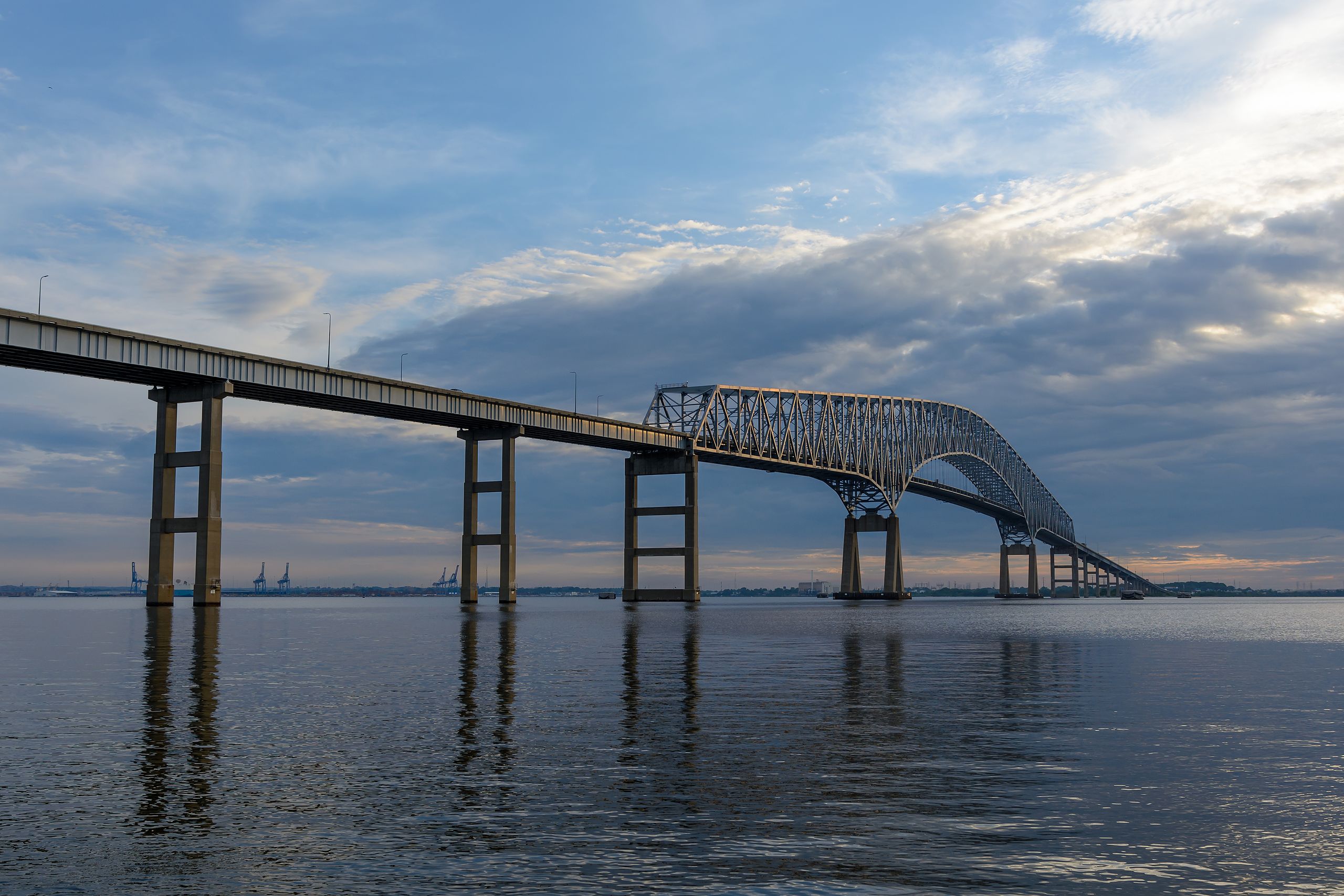
Rescue teams were searching for survivors today after an out-of-control container ship struck one of the supports of the Francis Scott Key Bridge in Baltimore, Maryland, causing its whole central section to collapse.
Officials said at least seven cars toppled into the Patapsco River when the collision occurred at around 1.27am local time.
Eight construction workers on the bridge at the time were thought to have fallen into the river.
Two were later rescued, one of whom was in hospital.
Dramatic CCTV footage caught the moment the ship hit the support, bringing the structure down.
“It looked like something out of an action movie,” Baltimore mayor Brandon M. Scott said at a press conference.
The US Coast Guard said the vessel was a 948-foot-long Singapore-flagged containership.
Its name is reported as Dali.
Maryland governor Wes Moore told reporters the ship’s crew issued a mayday request before hitting the bridge, saying it had lost power and was drifting out of control.
Moore said officials were able to slow the flow of traffic, preventing more vehicles from getting onto the bridge.
He has declared a state of emergency in the state.
‘Not designed for that kind of impact’
The bridge was a continuous through truss bridge carrying Maryland Route 695. It opened in 1977.
Bridge designer Ian Firth, former president of the Institution of Structural Engineers, said he wasn’t surprised the bridge was completely destroyed because it wasn’t designed to take such a direct hit.
“A very, very large container ship like that, travelling even quite slowly, five or six knots or something, would impart a massive force of many thousands of tonnes, and those bridge supports are not designed to sustain that kind of impact,” he told BBC Radio 4.
He said the bridge was designed before ships as big as the Dali were even conceived, and that its replacement would probably be a cable-stayed bridge that would allow designers to put the supports as far from the shipping lane as possible.
Dr David Collings, senior technical director at global consultancy Arcadis, said this is what happens when bridges and big ships intersect.
“Unfortunately, it is not unusual for the bridges to come off worse.
“When designing new bridges, the impact forces are so large that we usually aim to keep bridges and ships apart by increasing spans or using physical barriers like artificial islands or other large obstacles which will stop ships.
“For existing bridges, we don’t have this luxury so we carry out risk assessments to consider the likelihood of an impact and to assess the consequences if impact occurs.”
He added: “At Baltimore unfortunately we saw a collapse progressively extending from the pier hit by the ship into the spans until the whole bridge had collapsed. For older bridges we would look to reduce the risk of this type of failure by retrofitting strengthening.”










